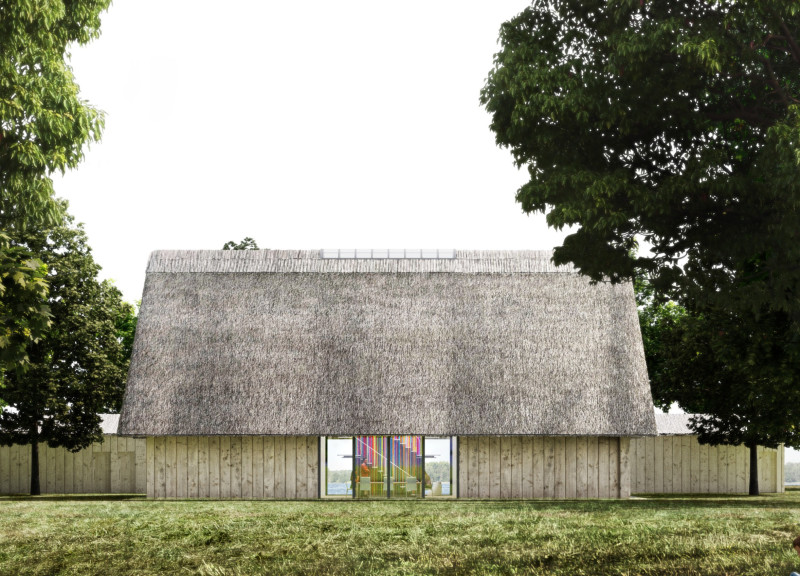5 key facts about this project
The general layout of the lake house maximizes views of the adjacent water body, leveraging expansive glass facades to create an unobstructed visual connection with the environment. The integration of indoor and outdoor spaces encourages an immersive experience with nature, reinforcing the project's primary function as an artist's haven. The building is organized around an open-plan living area, which fosters a communal atmosphere alongside flexible spaces designated for artistic production.
Unique Design Approaches in Materiality and Function
One notable aspect of the Latvia Painter's Lake House is its innovative use of natural materials, particularly thatched reeds for roofing and timber for structural elements. The thatched roof not only contributes to the building's aesthetic appeal but also enhances thermal insulation and durability. This choice reflects an understanding of local building practices while supporting sustainability by utilizing renewable resources. The use of wood throughout the interior creates warmth and a direct connection to the surrounding trees, enhancing the overall ambiance of the space.
The incorporation of large windows is also a distinct design feature, allowing natural light to penetrate deep into the interior spaces. This feature serves multiple functions: it brightens living areas, creates a visual dialogue between inside and outside, and offers expansive views of the landscape. These design elements are strategically combined to support the house’s function, giving artists a conducive environment for creativity and reflection.
Spatial Organization and Functional Design
The spatial organization of the painter’s lake house is carefully considered to balance privacy and communal interaction. The ground floor features an open-plan layout, combining the kitchen, dining, and living areas to promote social engagement and flexibility. This transition from shared spaces to private quarters on the upper level is designed to facilitate both collaboration and individual focus.
Additionally, the transition from internal spaces to outdoor areas is seamless, with sliding glass doors that connect interior living environments with terraces, encouraging outdoor engagement. The design pays careful attention to the natural topography, ensuring that the building complements the site rather than competes with it. The architectural approach taken in this project suggests a commitment to creating a living and working environment that respects and enhances its ecological context.
For more detailed insights, including architectural plans, sections, designs, and ideas, readers are encouraged to explore the project presentation further. This will provide a deeper understanding of the architectural rationale and the unique elements that define the Latvia Painter's Lake House as a distinctive addition to contemporary architecture.


























